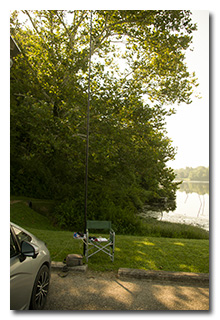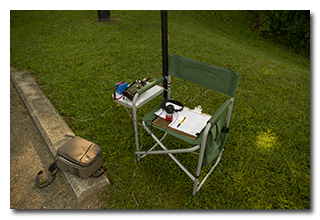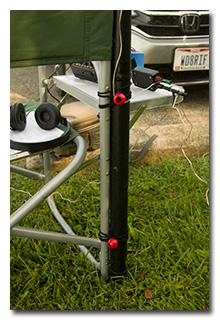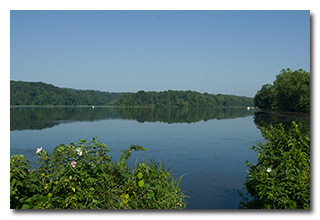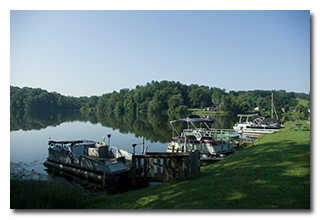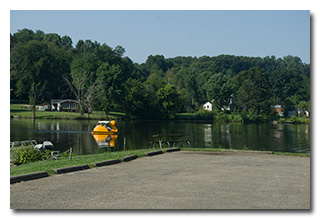Description
On Sunday, August 20, 2023, one member of the Southeast Ohio Radio Adventure Team performed a successful activation of Lake Logan State Park in Ohio as part of the Parks on the Air (POTA; link) program.
While on his way to Granville to help his parents move house, Eric McFadden, WD8RIF, stopped at the fishing peninsula on the east shore of Lake Logan to perform a quick activation.
Arriving at the fishing peninsula at about 1315 UTC, Eric found the area to be nearly empty. Selecting an out-of-the-way place to park near a well-placed sign-post, Eric deployed his 28½' wire vertical on his 31' Jackite telescoping fiberglass mast strapped to his folding camp-chair. Placing his Elecraft KX3 on the his folding camp-chair's flip-up table, Eric was on the air at 1331 UTC.
As at his previous activations of this park, Eric had good cell-signal at this location, and he would be able able to spot himself on POTA Spots (link) and to use POTA Spots to identify possible park-to-park (P2P) QSO opportunities.
Eric began his operation on 20m. Finding himself a frequency, Eric began calling CQ his first QSO came at 1332 UTC, before he was able to spot himself on POTA Spots, with NF0R in Missouri. This QSO was rough—Eric's Whiterook MK-33 paddle had been jiggled out of adjustment so that an additional "dit" was sent at the end every letter ending in a "dah". Eric was able to complete the QSO using the MK-33 paddle as a cootie after switching the KX3 into hand-key mode. Following the QSO, Eric grabbed a screwdriver out of the Enhanced KX3 Travel Kit and performed a field-expedient repair to the key. Thereafter, the key worked properly as a keyer paddle and QSOs came quickly, with Eric's fourteenth QSO coming at 1347 UTC with KI4W in North Carolina. This run included a QSO via ground-wave with the top activator of Lake Logan State Park, AF81, who has activated the park 100 times, and QSOs with operators located in Missouri (2), Florida (3), Tennessee (2), North Carolina (2), Idaho, Alabama, Texas, Ohio, and Arkansas.
Eric finished his operation by checking POTA Spots for P2P QSO opportunities. At 1353 UTC he completed a P2P QSO on 20m with NS1C at Fort Revere Park State Park (K-8386) in Massachussetts. At 1357 UTC he completed a P2P QSO on 20m with WB0RLJ at Chalco Hills State Recreation Area (K-4011) in Nebraska.
In all, Eric made sixteen QSOs, including two P2P QSOs, in just about twenty-six minutes of on-air time. All of Eric's QSOs were CW and were made with five watts output.
Eric also submitted his log to the World Wide Flora and Fauna in Amateur Radio (WWFF; link) program.
(return)

